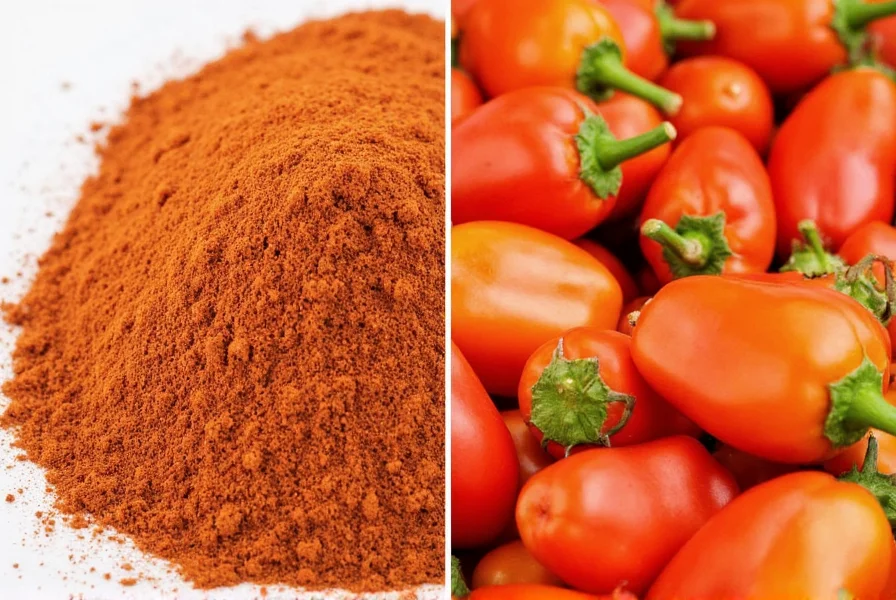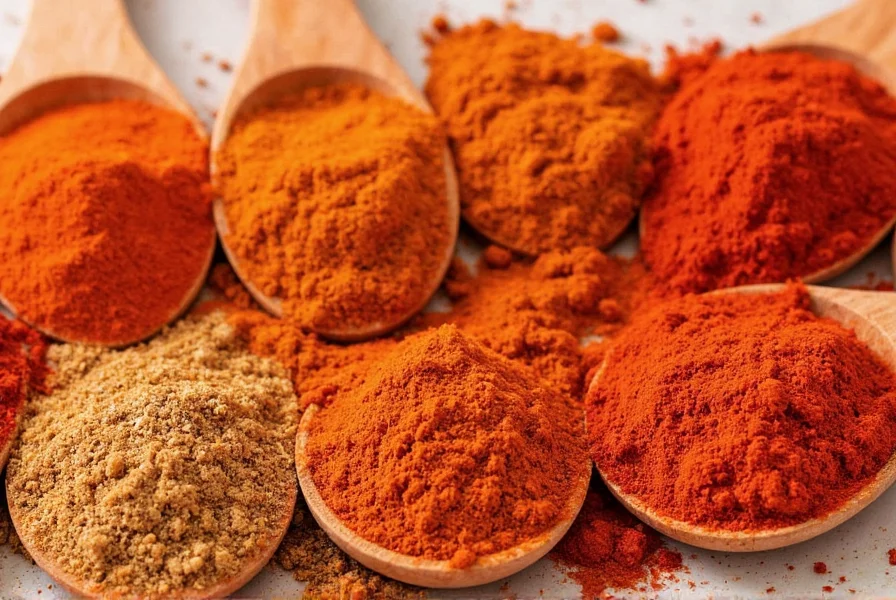Spice SOS: 7 Smoky & Sweet Paprika Substitutes You Need in Your Kitchen!
Whether you're halfway through whipping up your grandmother’s famous goulash or trying to recreate that smoky Spanish chorizo flavor, running out of paprika can feel like a kitchen apocalypse. But don’t panic—help is on the way! In this guide, we’ll walk you through the best substitutes for paprika, including their flavor profiles, heat levels, and when they shine brightest.
Table of Contents
- What Exactly Is Paprika?
- Why Would You Substitute Paprika?
- Top 7 Paprika Substitutes
- Buying Guide: Choosing the Right Paprika Alternative
- How to Use These Substitutes Like a Pro
- Conclusion
What Exactly Is Paprika?
Paprika is a vibrant red spice made from ground dried peppers, typically Capsicum annuum varieties. Originating from Central Europe and Hungary, it comes in three main types:
- Sweet paprika – Mild and slightly fruity
- Smoked paprika (Pimentón) – Dried over oak smoke, offering a deep, earthy flavor
- Hot paprika – Spicier version with added chili heat
If you're missing one of these versions in your spice rack, there are plenty of alternatives that can step in without sacrificing flavor—or at least give your dish a delicious twist.

Why Would You Substitute Paprika?
There are several reasons why you might need to find a substitute for paprika:
- You’ve run out mid-recipe
- The type of paprika you need isn't available
- You’re looking for a healthier alternative
- Your taste preferences lean more toward spicy or less intense flavors
- You have dietary restrictions (e.g., avoiding nightshades)
Whatever your reason, knowing which spices can mimic or enhance the flavor profile of paprika gives you flexibility and creativity in the kitchen.
Top 7 Paprika Substitutes
Let’s dive into our list of the top substitutes for paprika, each with its own flavor personality and ideal use case.
| Substitute | Flavor Profile | Heat Level | Best Used For | Recommended Ratio |
|---|---|---|---|---|
| Cayenne Pepper | Earthy, sharp, and spicy | Moderate to high | When heat is desired | ¼ tsp cayenne = 1 tsp paprika |
| Chili Powder | Complex blend of chili, garlic, cumin | Mild to moderate | Tacos, chili, Tex-Mex dishes | 1:1 ratio |
| Smoked Chipotle Powder | Smoky, spicy, and earthy | Moderate | Smoky flavor without paprika | ½ tsp chipotle = 1 tsp paprika |
| Ancho Chili Powder | Sweet, raisin-like, mild | Mild | Balancing sweetness and depth | 1:1 ratio |
| Cumin | Earthy, warm, nutty | Mild | Enhancing base flavors | ½ tsp cumin = 1 tsp paprika |
| Curry Powder | Spicy, warm, complex | Mild to moderate | Curries, stews, roasted veggies | ¾ tsp curry powder = 1 tsp paprika |
| Tomato Paste + Cayenne | Rich, tangy, slightly spicy | Mild to moderate | Adding color and warmth | 1 tsp tomato paste + pinch of cayenne |
1. Cayenne Pepper
If you want to bring the heat, cayenne pepper is your go-to substitute. While it lacks the sweet or smoky notes of paprika, it makes up for it with bold spiciness. Best used when making spicy marinades or fiery rubs.
2. Chili Powder
A staple in Mexican cooking, chili powder brings a balanced mix of earthy, spicy, and aromatic flavors. It's not a one-for-one swap but works beautifully in dishes where paprika is part of a larger spice blend.
3. Smoked Chipotle Powder
This is your secret weapon for achieving that smoky richness without paprika. Made from smoked and dried jalapeños, it adds both heat and complexity.
4. Ancho Chili Powder
Made from dried poblano peppers, ancho chili powder is mild, sweet, and rich—great for replacing sweet paprika in soups, sauces, and stews.
5. Cumin
Cumin offers earthy warmth and pairs well with paprika in many spice blends. On its own, it won’t replicate paprika’s color or sweetness, but it can complement other ingredients to build flavor depth.
6. Curry Powder
Curry powder varies by brand and region, but most versions include turmeric, coriander, cumin, and ginger. Its complex, aromatic nature can stand in for paprika in Indian-inspired dishes or vegetable roasts.
7. Tomato Paste + Cayenne
This combo works well when you want to mimic paprika’s color and add a bit of warmth. Mix a teaspoon of tomato paste with a pinch of cayenne for a quick, versatile substitute.

Buying Guide: Choosing the Right Paprika Alternative
When selecting a substitute for paprika, consider the following factors to ensure the best results in your cooking:
- Flavor Profile: Do you need sweet, smoky, or spicy? Choose accordingly.
- Intended Use: Will it be part of a dry rub, sauce, stew, or seasoning blend?
- Heat Level Tolerance: Adjust substitutions if cooking for kids or spice-sensitive guests.
- Availability: Some spices may not be readily available in all regions.
- Freshness: Check expiration dates; older spices lose potency quickly.
Product Spotlight: Recommended Brands
While substitutes vary depending on personal taste, here are some highly rated products that can make your life easier:
- McCormick Ground Cayenne Pepper – Great for adding controlled heat
- La Flor Smoked Paprika (if still using paprika) – A premium option if you’re just expanding your collection
- Badia Ancho Chili Powder – Perfect for a sweet and mild kick
- Simply Organic Chipotle Powder – Ideal for authentic smokiness without artificial additives
- Spice Islands Curry Powder – Offers a robust flavor boost for curries and casseroles
How to Use These Substitutes Like a Pro
Here are some expert tips for incorporating these substitutes seamlessly into your dishes:
- Taste as You Go: Since many substitutes are more potent than paprika, start with a smaller amount and adjust.
- Balance with Other Flavors: Pair cumin with coriander or smoked paprika with garlic to round out the flavor profile.
- Dry Rubs Work Wonders: Combine chipotle powder with brown sugar or sea salt for killer barbecue-style rubs.
- Use in Marinades: Mix chili powder with olive oil and vinegar for a flavorful meat or tofu marinade.
- Add Color Creatively: If color is key (like in deviled eggs), combine tomato paste with a dash of turmeric or saffron.
Recipe Ideas Using Paprika Substitutes
- Chipotle Chicken Tacos – Swap paprika for chipotle powder in your taco seasoning.
- Ancho Chili Stew – Use ancho chili powder as the base for a hearty winter stew.
- Curry-Spiced Roasted Vegetables – Replace paprika with curry powder for a colorful side dish.
- Spicy Tomato Pasta Sauce – Add a touch of cayenne and tomato paste to your homemade sauce.
- Tex-Mex Chili Con Carne – Use chili powder in place of paprika for that classic southwestern flair.
Conclusion
Running out of paprika doesn’t mean your meal has to suffer. Whether you're craving heat, smokiness, or sweetness, there’s a perfect substitute waiting in your pantry. From cayenne pepper to smoked chipotle and even a clever tomato paste trick, you now have the tools to rescue your recipe with style.
Remember, the best substitute depends on your personal taste, the dish you're preparing, and what’s already in your spice rack. Don’t be afraid to experiment—some of the most iconic flavors were born from necessity and curiosity.
So next time you find yourself staring at an empty paprika jar, smile and reach for one of these flavorful alternatives. Happy cooking!










 浙公网安备
33010002000092号
浙公网安备
33010002000092号 浙B2-20120091-4
浙B2-20120091-4